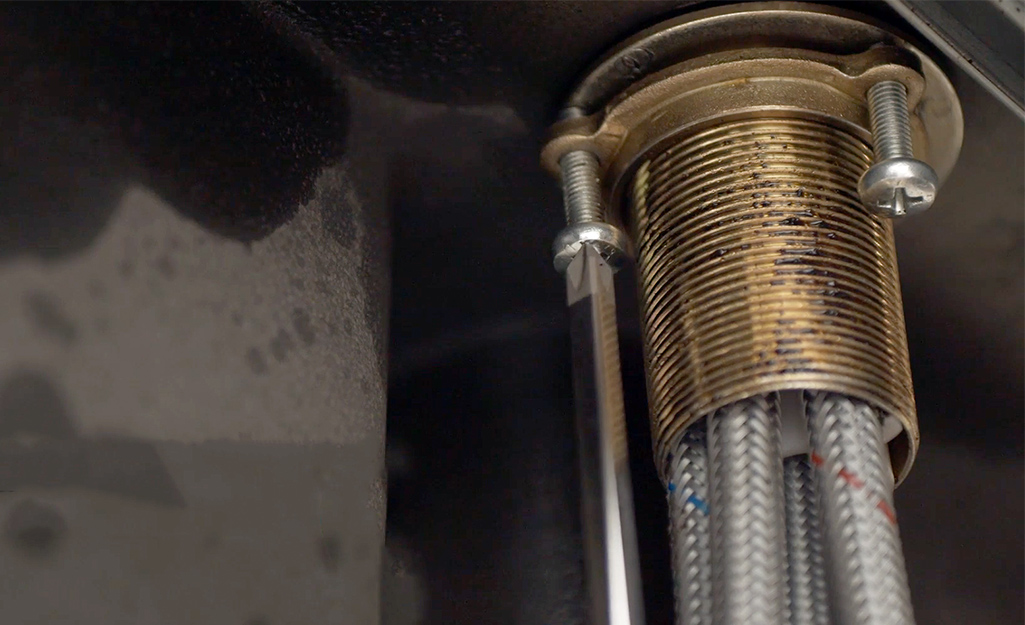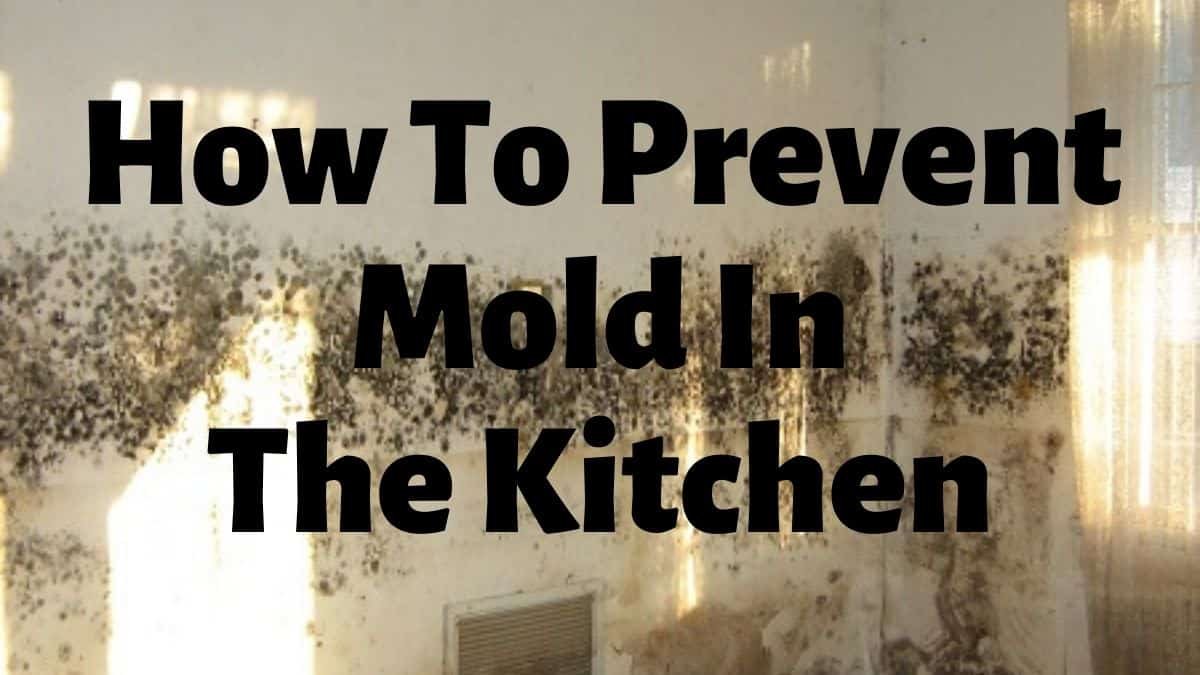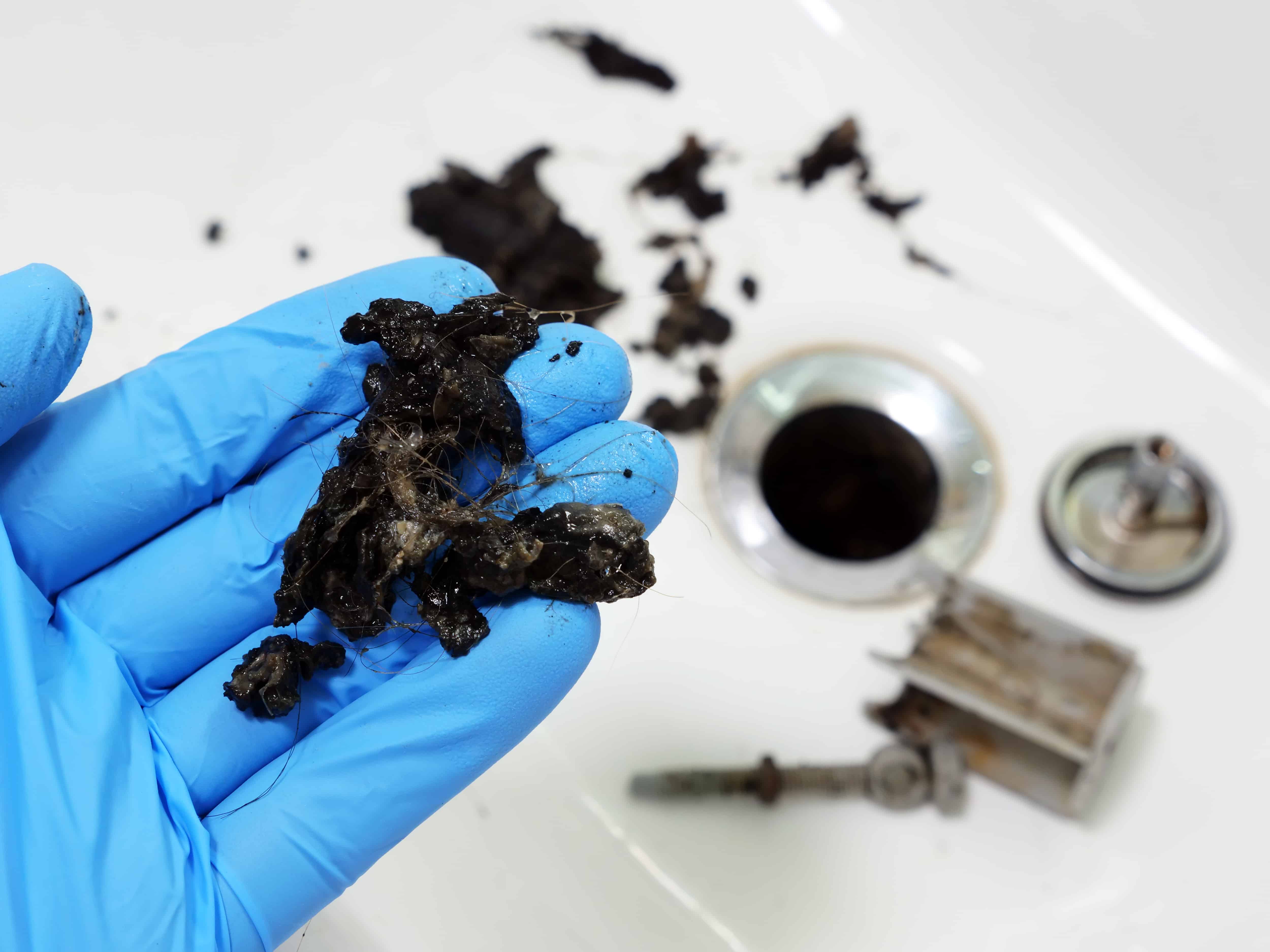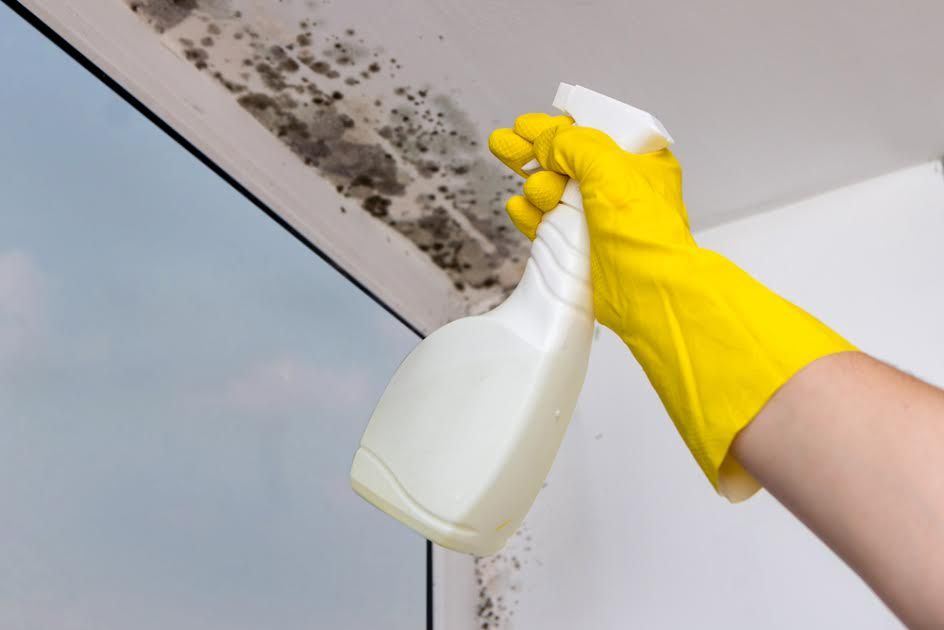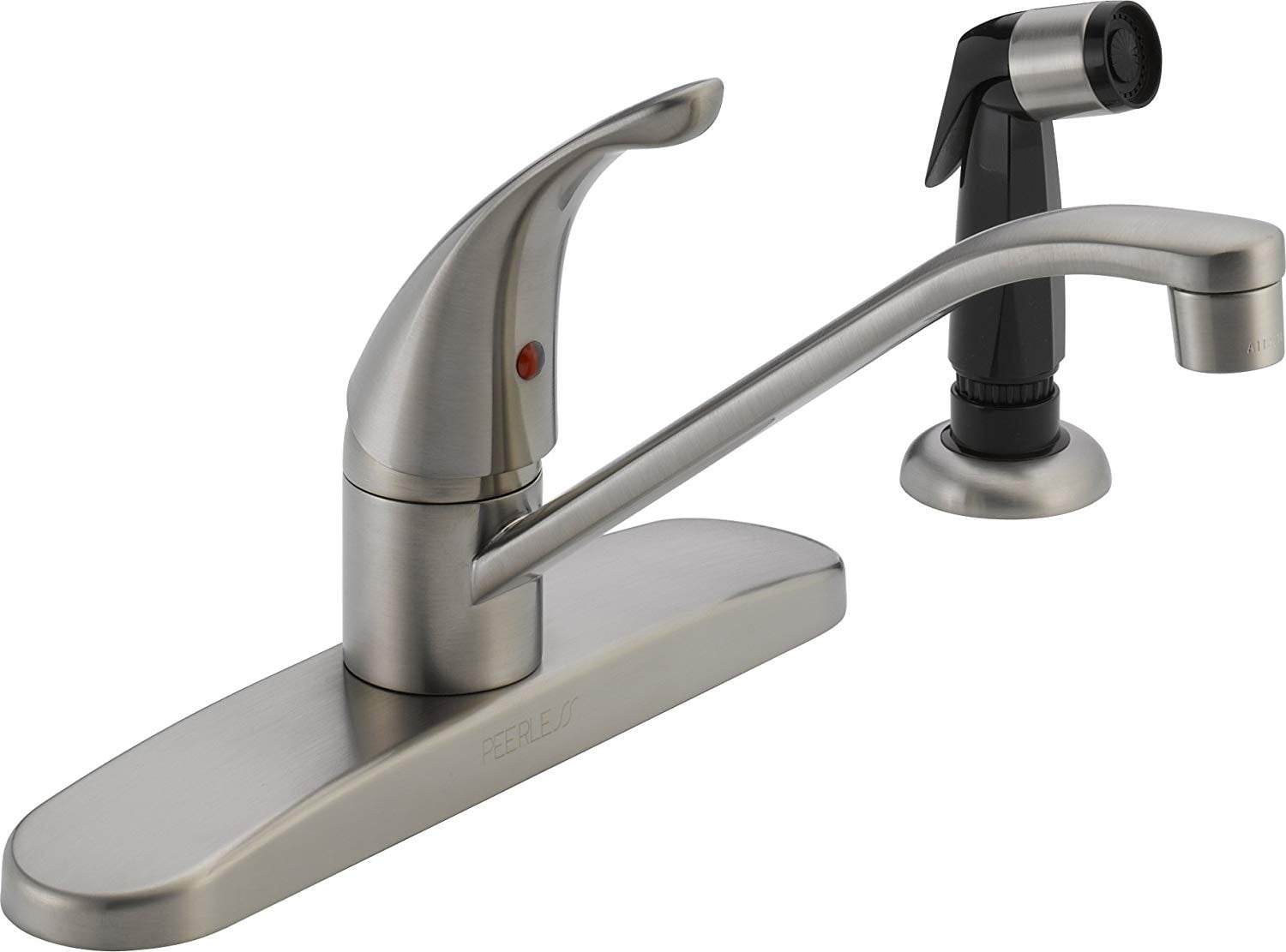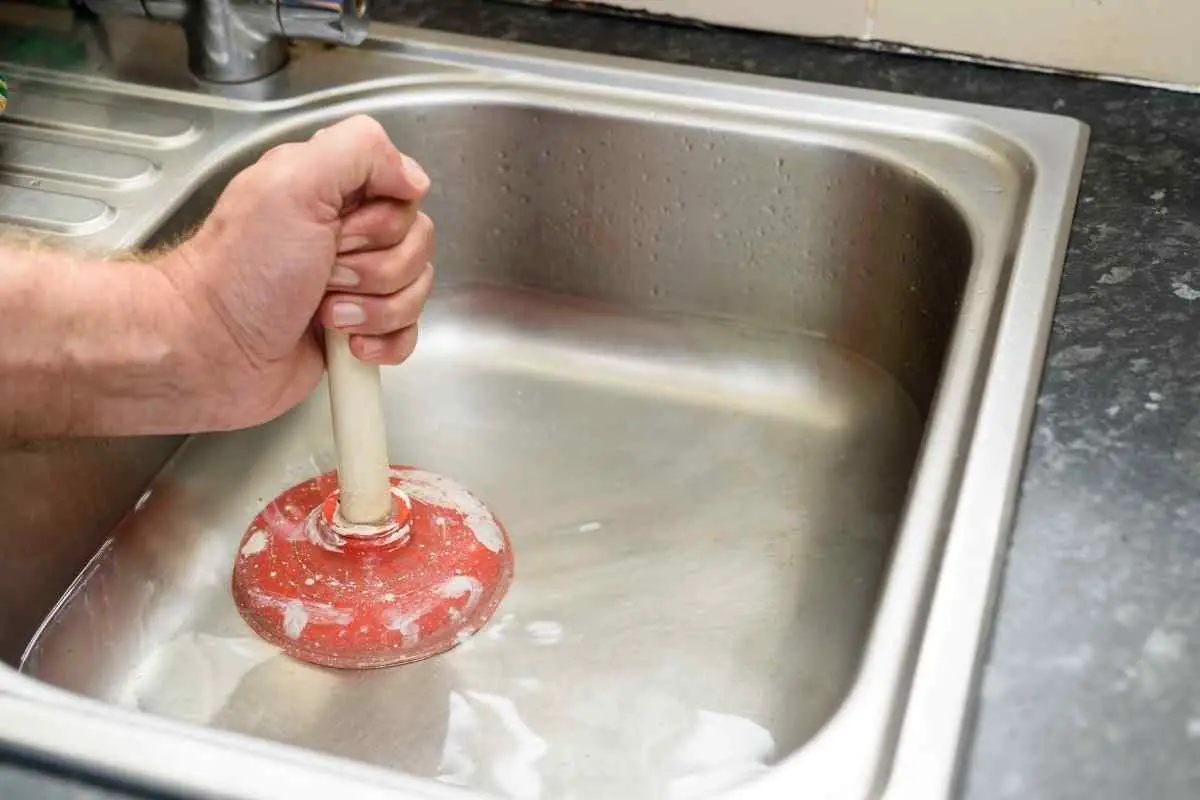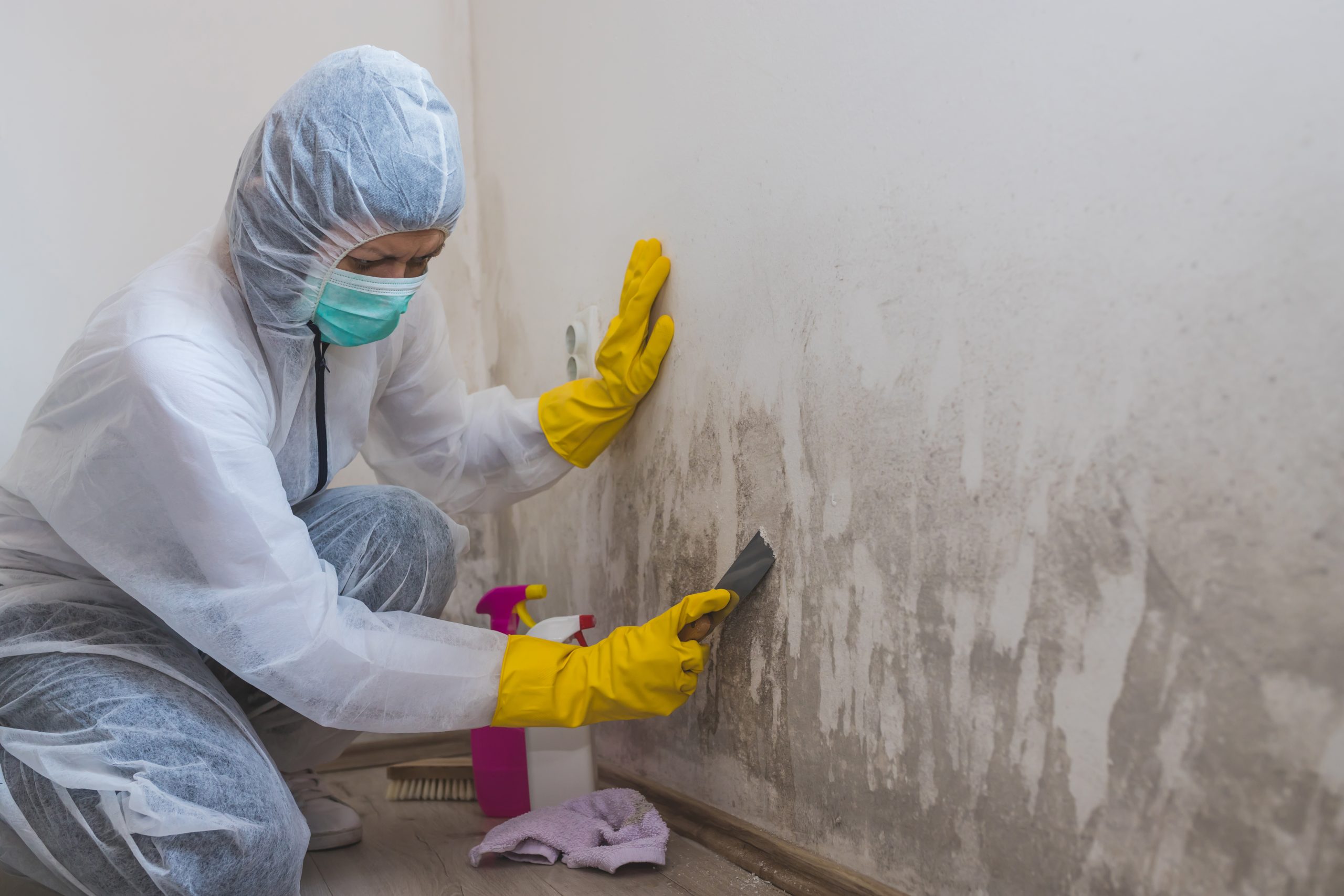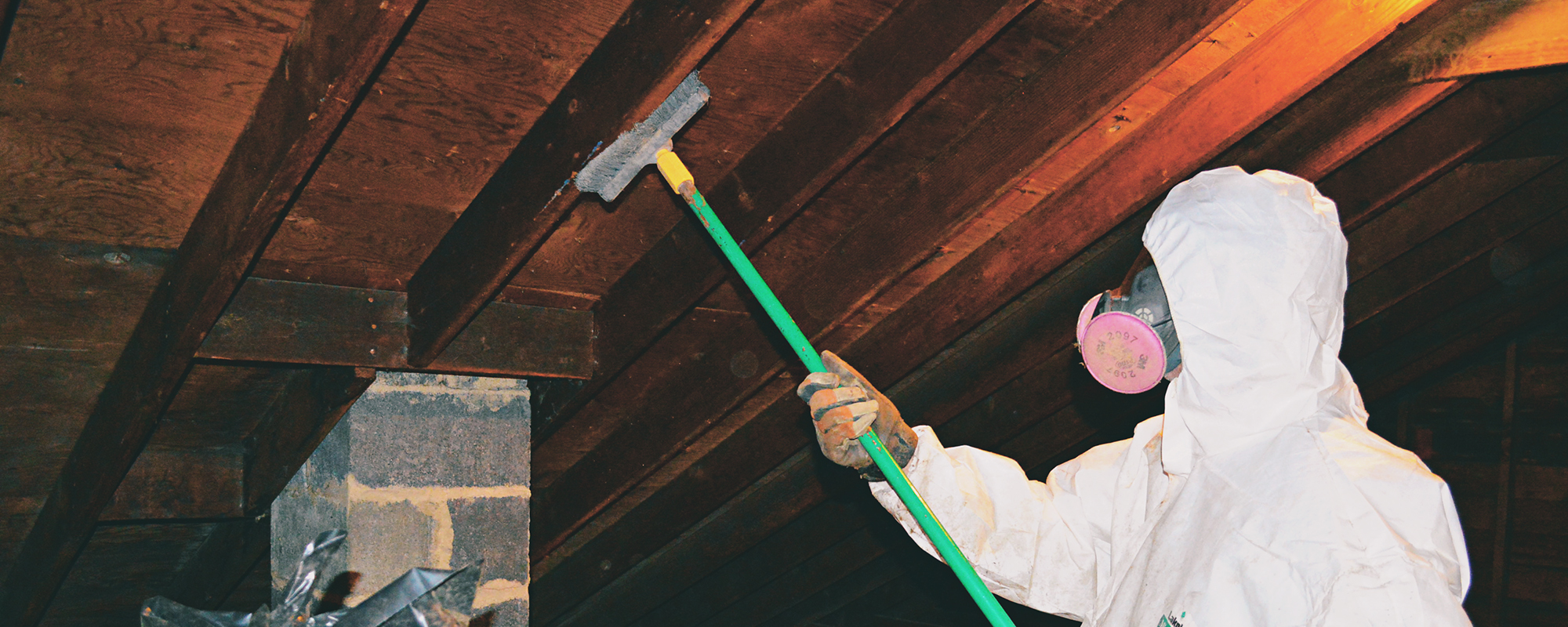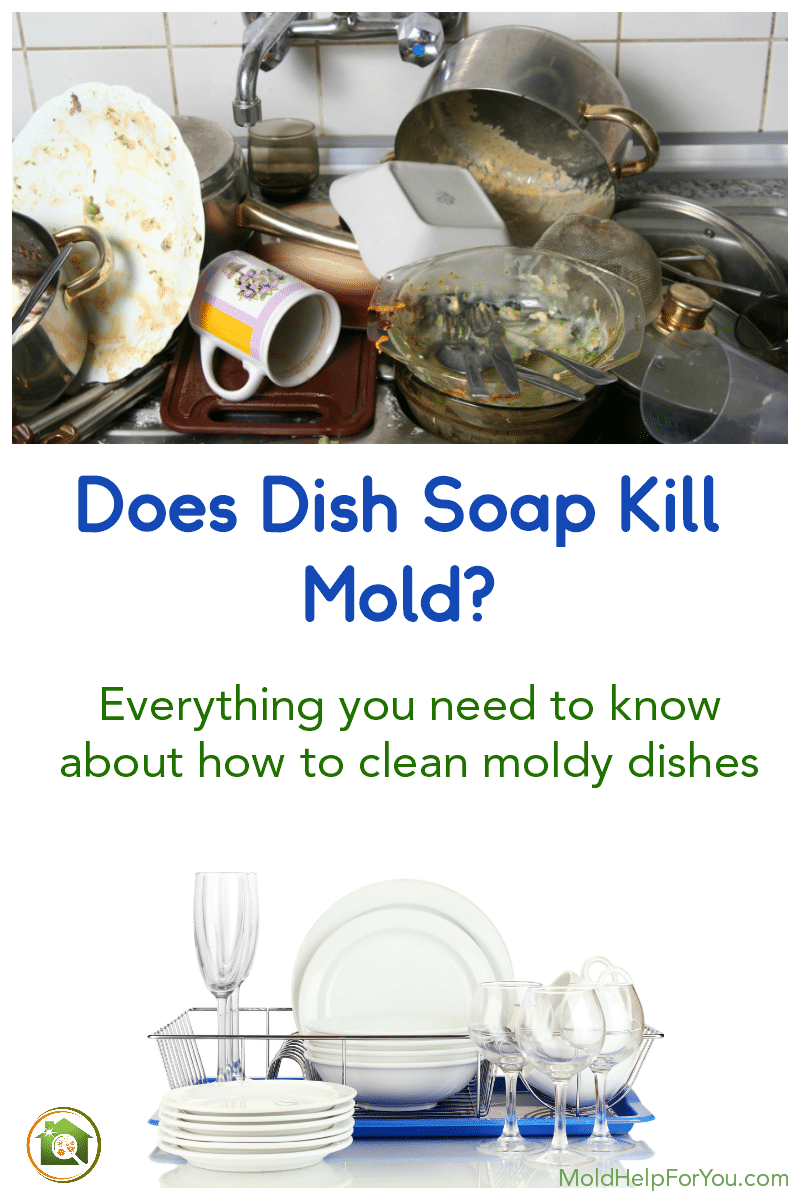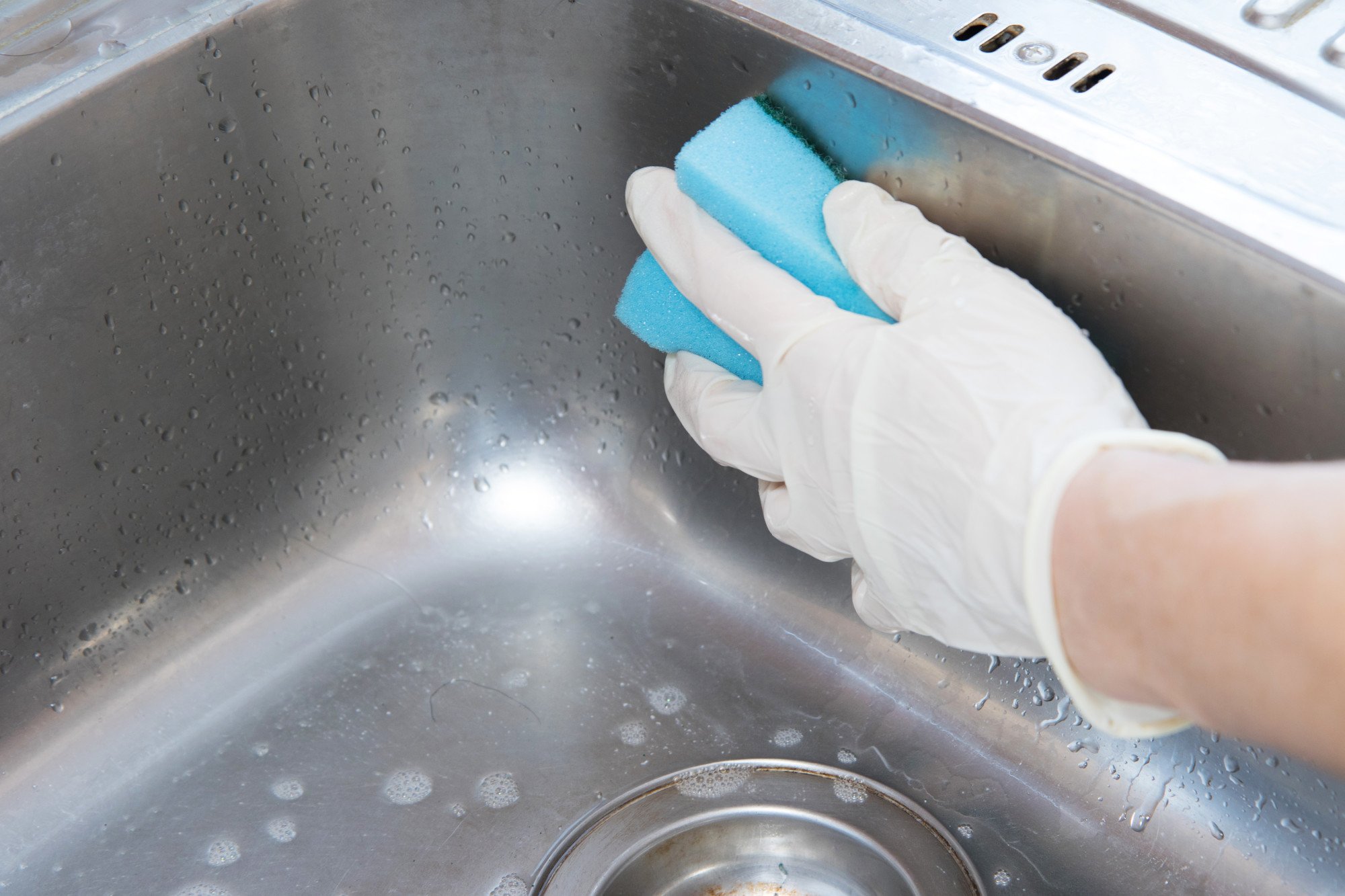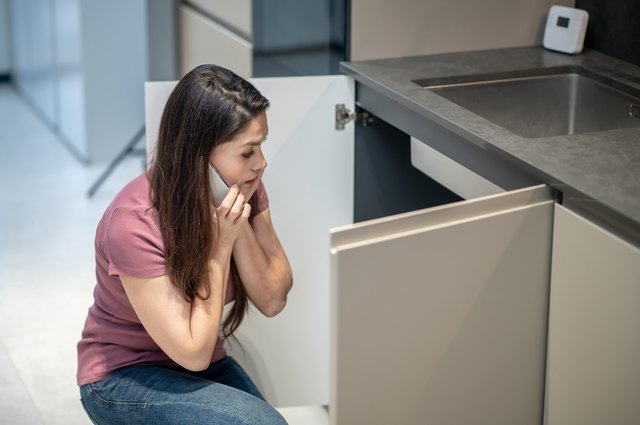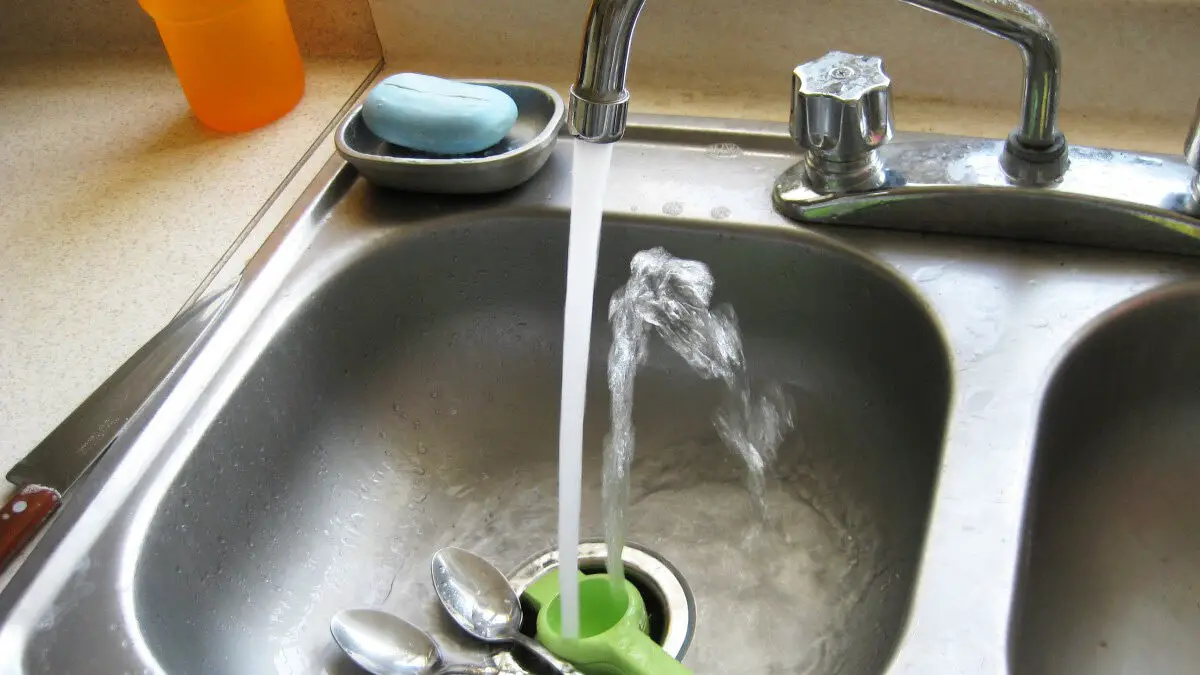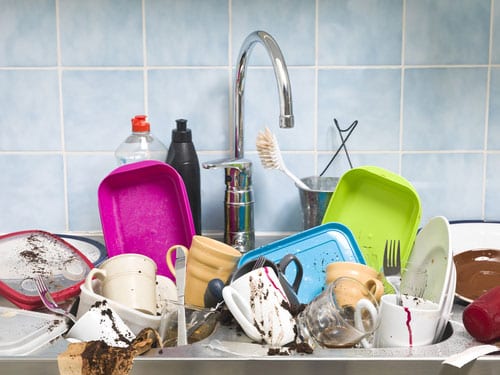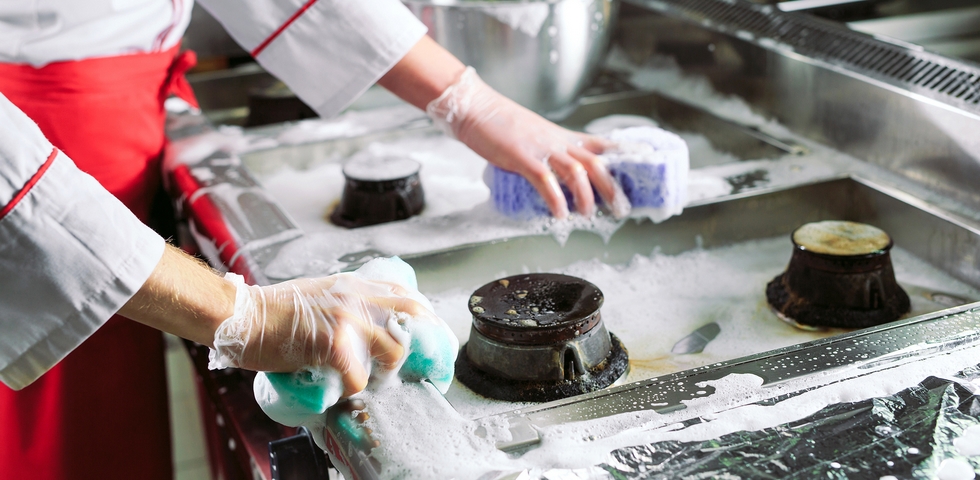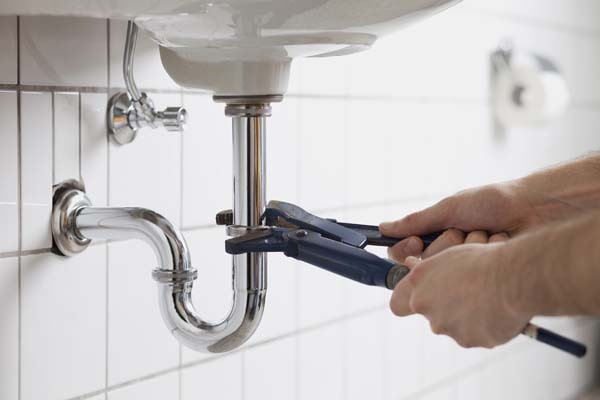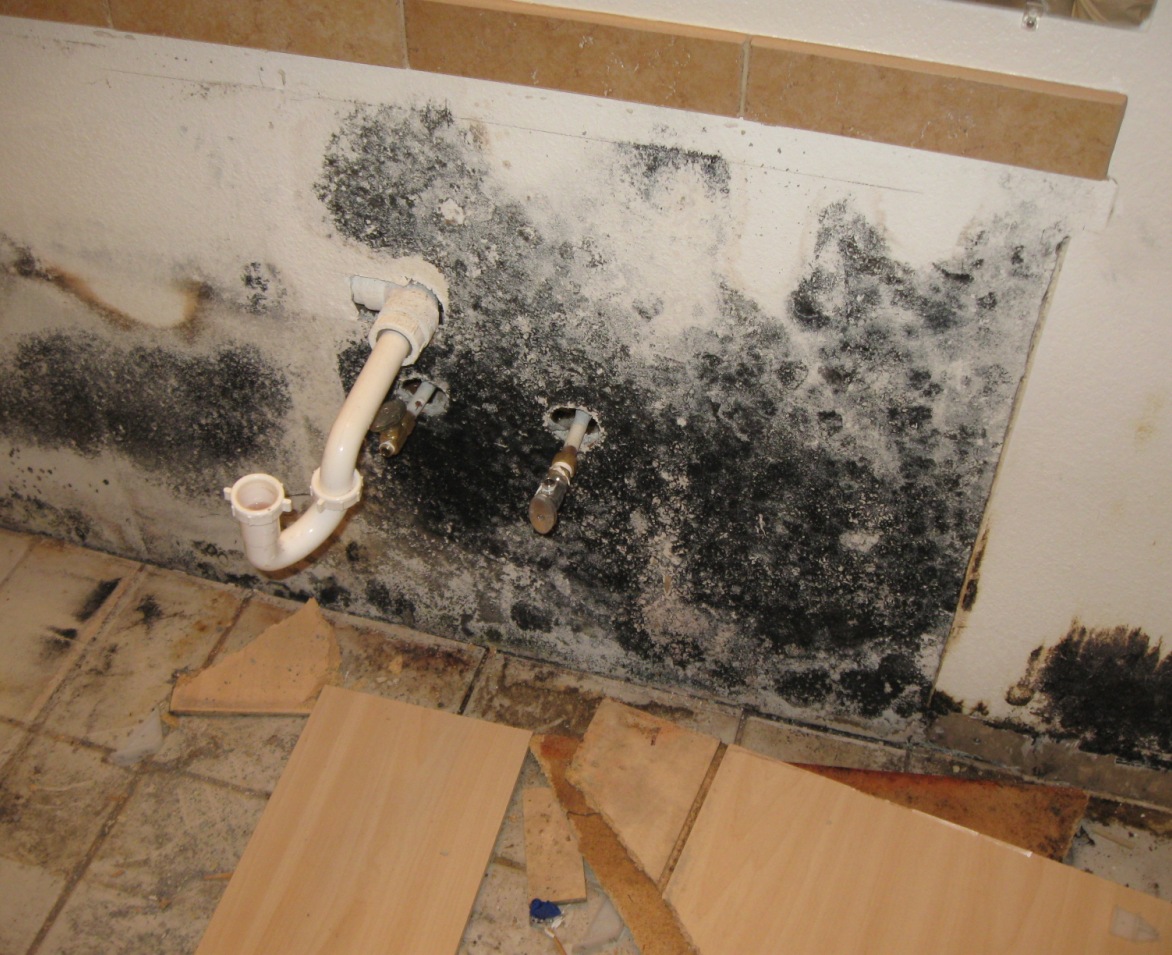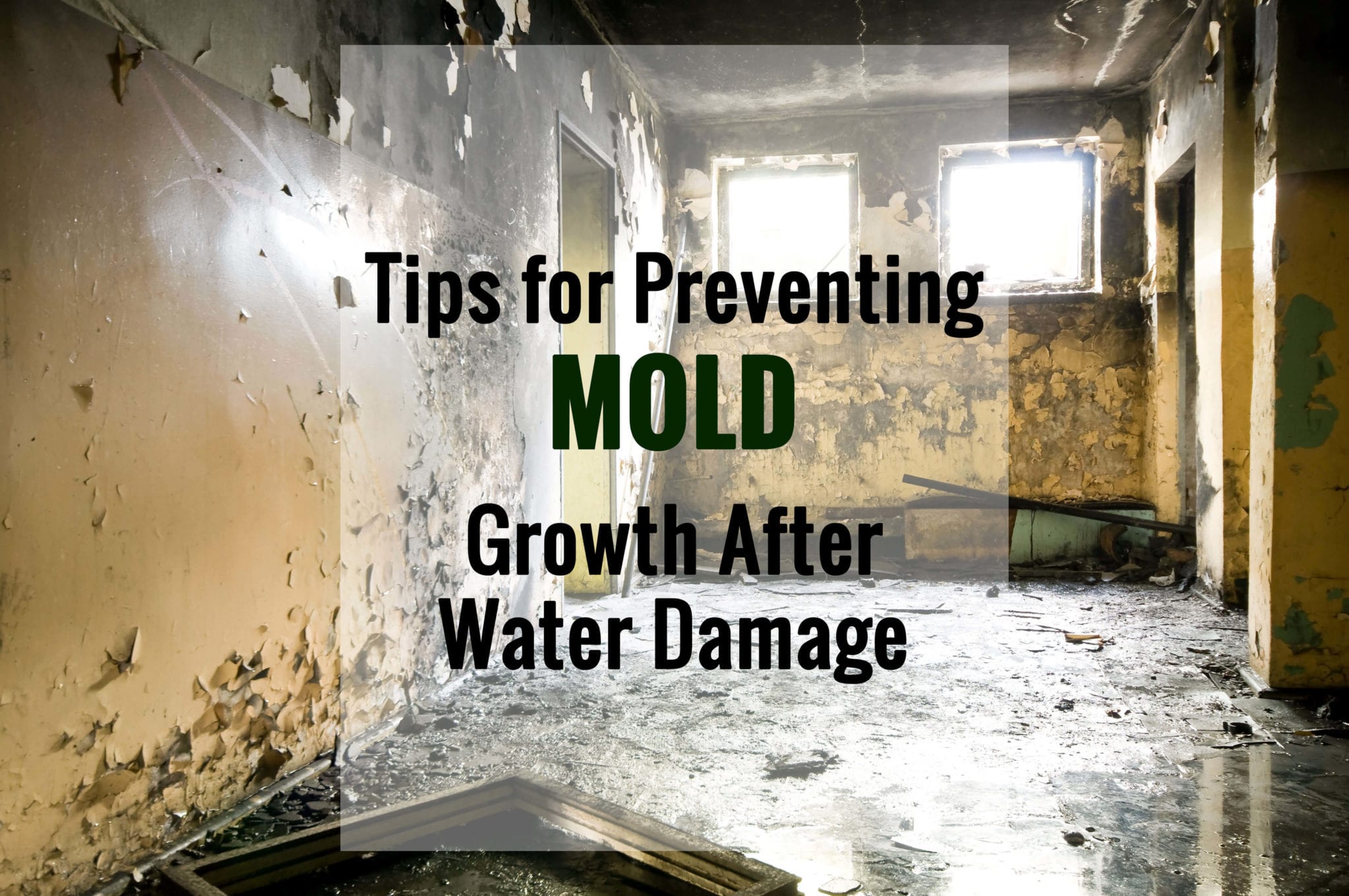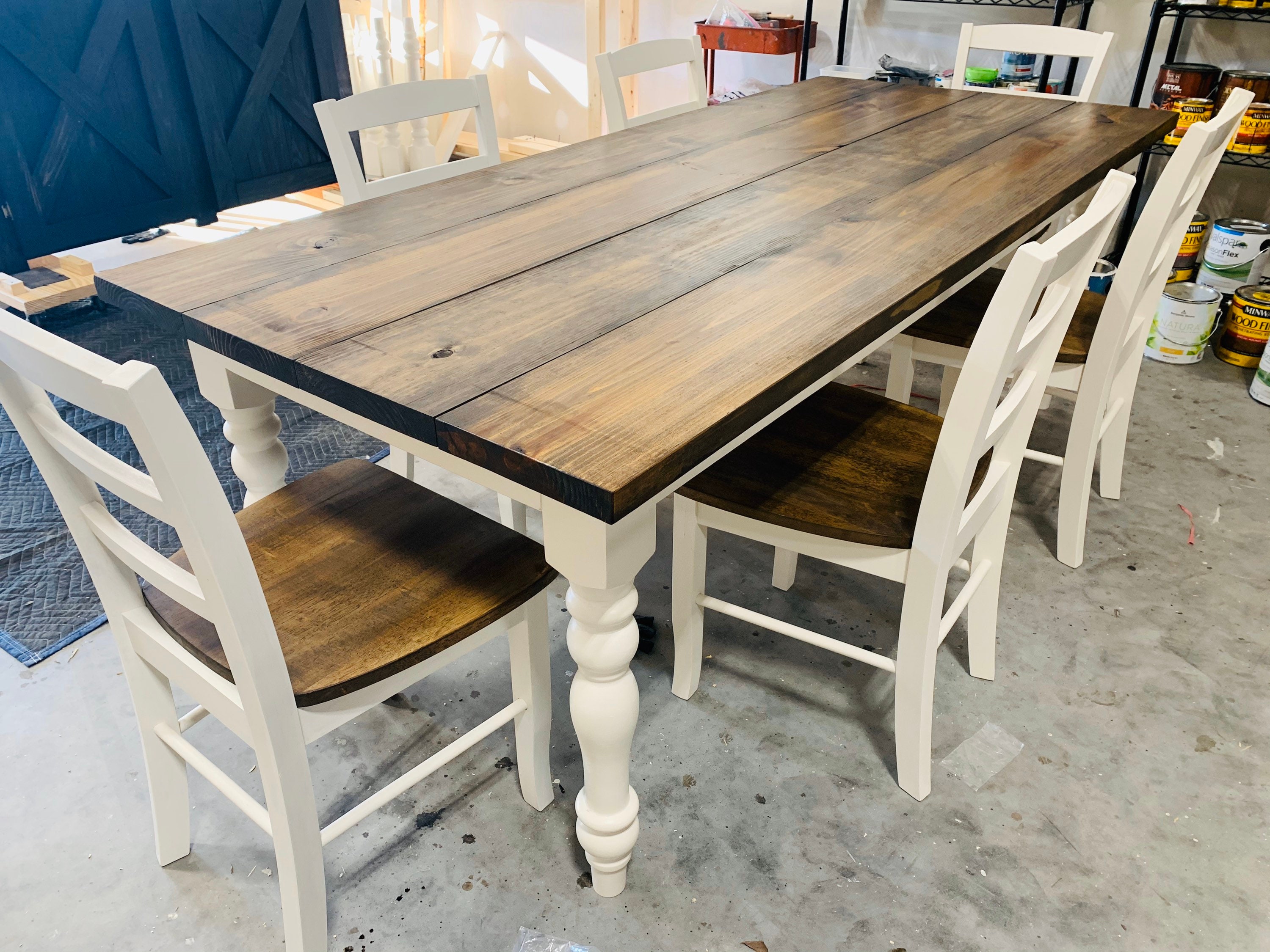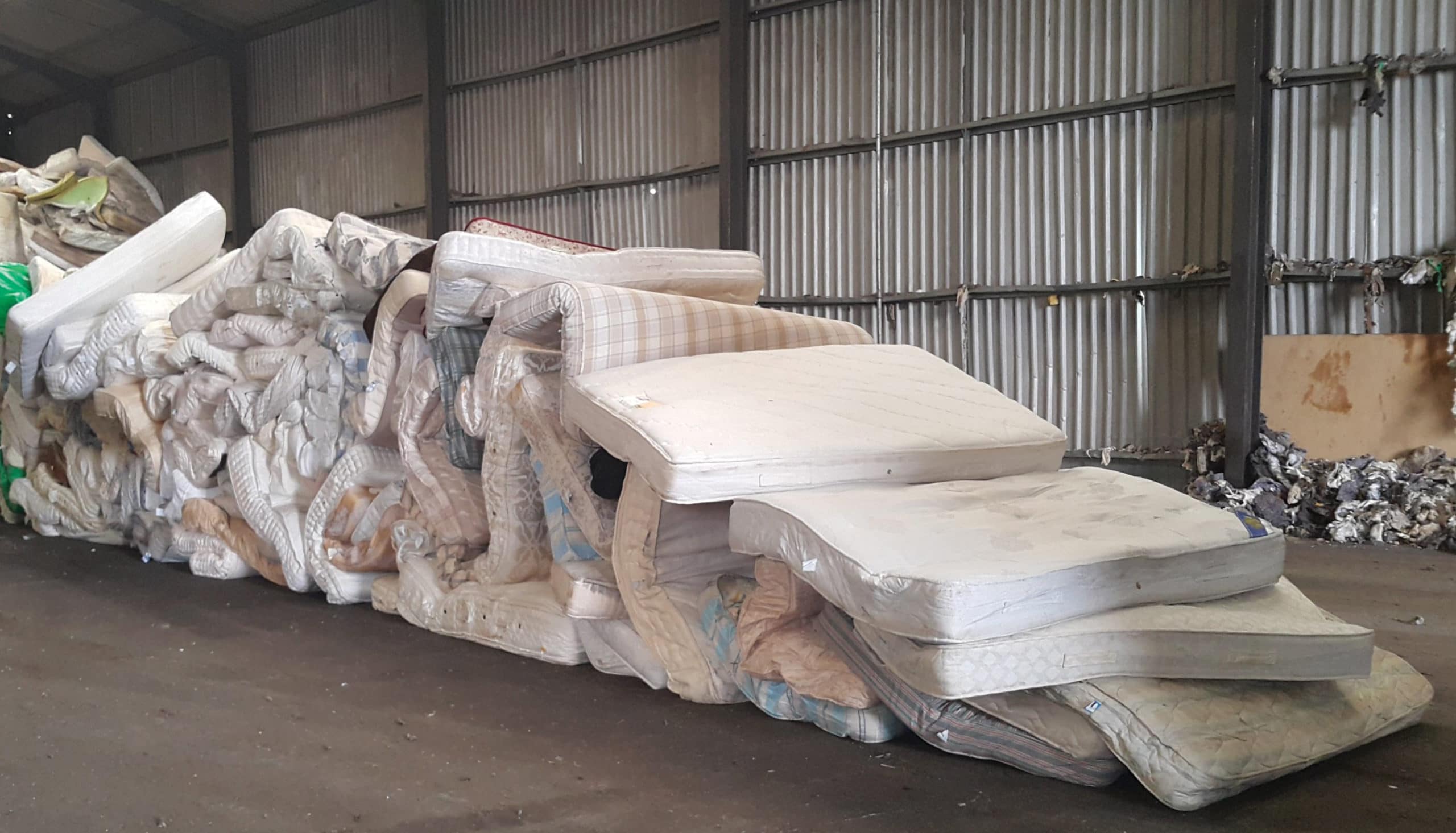If you've noticed mold growing on your kitchen sink faucet, don't panic. While mold can be unsightly and potentially harmful, there are easy and effective ways to remove it from your faucet. Here are some steps to follow for mold removal. Step 1: Identify the type of mold. Not all molds are the same and some may require different methods of removal. Make sure to wear protective gloves and a mask when dealing with mold to avoid any potential health risks. Step 2: Clean the area. Before attempting to remove the mold, clean the area around the faucet with a mild soap and water. This will help to remove any surface debris and make the mold easier to access. Step 3: Use a mold removal product. There are many products on the market specifically designed to remove mold. Look for one that is safe for use on faucets and follow the instructions carefully. Step 4: Scrub the affected area. Use a scrub brush or toothbrush to gently scrub the mold, paying special attention to any crevices or hard-to-reach areas. Rinse the faucet thoroughly with water afterwards. Step 5: Dry the faucet. Mold thrives in moist environments, so it's important to thoroughly dry the faucet after cleaning. Use a clean, dry cloth to wipe down the faucet and make sure it is completely dry. Step 6: Prevention is key. To prevent mold from growing on your faucet in the future, make sure to keep the area clean and dry. Regularly check for any signs of mold and address them promptly.How to Remove Mold from a Kitchen Sink Faucet
Preventing mold from growing on your kitchen sink faucet is much easier than dealing with it after it has already appeared. Here are some tips to help prevent mold from forming on your faucet: 1. Keep the area clean and dry. Mold thrives in moist and dirty environments, so make sure to regularly clean your faucet and keep it dry. 2. Fix any leaks. If your faucet is leaking, it can create a moist environment that is perfect for mold growth. Fix any leaks as soon as you notice them. 3. Use a fan or open a window. When using the sink or doing dishes, turn on a fan or open a window to help circulate air and keep the area dry. 4. Use a mold-resistant caulk. When re-caulking your faucet, choose a mold-resistant caulk to prevent mold growth in the future. 5. Check for any cracks or damage. Inspect your faucet regularly for any cracks or damage that may lead to moisture buildup and mold growth.How to Prevent Mold on Kitchen Sink Faucets
If you prefer to use natural and DIY methods for removing mold from your kitchen sink faucet, here are some options to consider: Vinegar: Mix equal parts vinegar and water in a spray bottle and spray it onto the moldy areas. Let it sit for 15-20 minutes before scrubbing and rinsing with water. Baking soda: Make a paste with baking soda and water and apply it to the moldy areas. Let it sit for 10-15 minutes before scrubbing and rinsing with water. Tea tree oil: Mix 1 teaspoon of tea tree oil with 1 cup of water in a spray bottle and spray it onto the moldy areas. Let it sit for a few minutes before wiping it off with a damp cloth. Borax: Mix 1 cup of borax with 1 gallon of water and apply it to the moldy areas. Let it sit for 10-15 minutes before scrubbing and rinsing with water. Hydrogen peroxide: Mix equal parts hydrogen peroxide and water in a spray bottle and spray it onto the moldy areas. Let it sit for 10-15 minutes before scrubbing and rinsing with water.DIY Mold Removal for Kitchen Sink Faucets
If you prefer to use commercial products for mold removal, here are some of the best options for removing mold on kitchen sink faucets: Tilex Mold & Mildew Remover: This spray is specifically designed to remove mold and mildew from various surfaces, including faucets. Mold Armor Mold Remover & Disinfectant: This product not only removes mold, but also kills 99.9% of germs and bacteria. CLR Mold & Mildew Stain Remover: This powerful formula removes tough mold and mildew stains without the need for scrubbing. Pour-N-Restore Mold Stain Remover: This product is specifically designed to remove mold stains on a variety of surfaces, including faucets. Concrobium Mold Control: This non-toxic product not only removes mold, but also prevents it from growing back.Best Products for Removing Mold on Kitchen Sink Faucets
Understanding the common causes of mold on kitchen sink faucets can help you prevent it from happening in the future. Here are some potential causes: 1. Moisture: Mold thrives in moist environments, so any excess moisture on or around your faucet can lead to mold growth. 2. Leaks: A leaking faucet can create a moist environment that is perfect for mold to grow. 3. Lack of ventilation: If the area around your faucet is not properly ventilated, it can lead to moisture buildup and mold growth. 4. Dirty surfaces: Mold can grow on any surface that is dirty or has food particles, so keeping your faucet clean is important in preventing mold growth.Common Causes of Mold on Kitchen Sink Faucets
If you have a severe mold problem on your kitchen sink faucet, it may be best to call in a professional for mold removal. A professional will have the necessary equipment and expertise to safely and effectively remove the mold from your faucet. They may also be able to identify any underlying issues, such as leaks or poor ventilation, that may be contributing to the mold growth and provide solutions to prevent it from happening again in the future.Professional Mold Removal for Kitchen Sink Faucets
After removing mold from your kitchen sink faucet, it's important to thoroughly clean and disinfect the area to prevent it from coming back. Here's how: 1. Clean the faucet: Use a mild soap and water to clean the faucet and remove any remaining mold residue. 2. Disinfect the area: Use a disinfectant spray or wipe to thoroughly disinfect the faucet and the surrounding area. 3. Rinse with water: Rinse the faucet with clean water to remove any leftover cleaning products. 4. Dry the faucet: Use a clean, dry cloth to thoroughly dry the faucet and surrounding area. Make sure it is completely dry to prevent mold from growing back.How to Clean and Disinfect a Moldy Kitchen Sink Faucet
If you prefer to use natural and non-toxic methods for removing mold on your kitchen sink faucet, here are some options to consider: 1. White vinegar: Mix equal parts white vinegar and water in a spray bottle and spray it onto the moldy areas. Let it sit for 15-20 minutes before scrubbing and rinsing with water. 2. Baking soda: Make a paste with baking soda and water and apply it to the moldy areas. Let it sit for 10-15 minutes before scrubbing and rinsing with water. 3. Tea tree oil: Mix 1 teaspoon of tea tree oil with 1 cup of water in a spray bottle and spray it onto the moldy areas. Let it sit for a few minutes before wiping it off with a damp cloth. 4. Borax: Mix 1 cup of borax with 1 gallon of water and apply it to the moldy areas. Let it sit for 10-15 minutes before scrubbing and rinsing with water. 5. Hydrogen peroxide: Mix equal parts hydrogen peroxide and water in a spray bottle and spray it onto the moldy areas. Let it sit for 10-15 minutes before scrubbing and rinsing with water.Natural Remedies for Removing Mold on Kitchen Sink Faucets
Mold can be sneaky and may not be immediately noticeable on your kitchen sink faucet. Here are some signs to look out for that may indicate mold growth on your faucet: 1. Discoloration: Mold can appear as black, green, or brown spots on your faucet. 2. Musty odor: If you notice a musty or unpleasant odor coming from your faucet, it could be a sign of mold growth. 3. Water damage: If your faucet has been leaking or has visible water damage, it may be a breeding ground for mold. 4. Allergic reactions: If you or someone in your household is experiencing allergic reactions, such as sneezing, coughing, or itchy eyes, it could be due to mold on your faucet.Signs of Mold Growth on Kitchen Sink Faucets
The best way to deal with mold on your kitchen sink faucet is to prevent it from happening in the first place. Here are some steps to take to prevent mold growth: 1. Keep the area clean and dry: Regularly clean your faucet and make sure to dry it thoroughly after use. 2. Fix any leaks: If you notice a leaky faucet, fix it as soon as possible to prevent moisture buildup. 3. Use a fan or open a window: When using the sink or doing dishes, turn on a fan or open a window to help circulate air and keep the area dry. 4. Use a mold-resistant caulk: When re-caulking your faucet, choose a mold-resistant caulk to prevent mold growth in the future. 5. Regularly check for mold: Make it a habit to regularly inspect your faucet for any signs of mold and address them promptly to prevent it from spreading.Preventing Mold Growth in Kitchen Sink Faucets
How to Prevent Mold Growth on Your Kitchen Sink Faucet
The Dangers of Mold on Kitchen Sink Faucets
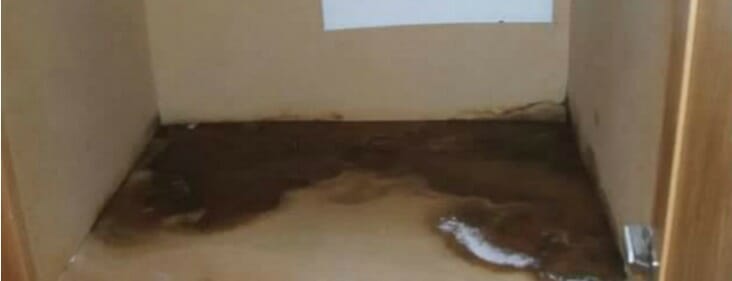 Mold is a common problem in many households, and it can easily grow on your kitchen sink faucet if not properly maintained. The presence of mold on your faucet not only looks unsightly, but it can also pose health risks. Mold can aggravate allergies and respiratory issues, and it can also cause skin irritation and infections. Additionally, mold can weaken the structure of your faucet, leading to potential water leaks and damage. Therefore, it is important to take steps to prevent mold growth on your kitchen sink faucet.
Mold is a common problem in many households, and it can easily grow on your kitchen sink faucet if not properly maintained. The presence of mold on your faucet not only looks unsightly, but it can also pose health risks. Mold can aggravate allergies and respiratory issues, and it can also cause skin irritation and infections. Additionally, mold can weaken the structure of your faucet, leading to potential water leaks and damage. Therefore, it is important to take steps to prevent mold growth on your kitchen sink faucet.
Keep Your Faucet Dry
 One of the most effective ways to prevent mold growth on your kitchen sink faucet is to keep it dry. After using the faucet, make sure to wipe it down with a clean, dry cloth. This will remove any excess moisture that may have accumulated, making it difficult for mold to grow. Pay special attention to hard-to-reach areas, such as the base of the faucet and around the handles, as these are prime spots for mold growth.
One of the most effective ways to prevent mold growth on your kitchen sink faucet is to keep it dry. After using the faucet, make sure to wipe it down with a clean, dry cloth. This will remove any excess moisture that may have accumulated, making it difficult for mold to grow. Pay special attention to hard-to-reach areas, such as the base of the faucet and around the handles, as these are prime spots for mold growth.
Regularly Clean Your Faucet
 In addition to keeping your faucet dry, it is important to regularly clean it to prevent mold growth. Use a mild cleaner or a mixture of water and vinegar to wipe down the faucet and remove any dirt or grime. Be sure to also clean the aerator, which is the small mesh screen at the end of the faucet, as this can also collect moisture and become a breeding ground for mold.
In addition to keeping your faucet dry, it is important to regularly clean it to prevent mold growth. Use a mild cleaner or a mixture of water and vinegar to wipe down the faucet and remove any dirt or grime. Be sure to also clean the aerator, which is the small mesh screen at the end of the faucet, as this can also collect moisture and become a breeding ground for mold.
Fix Any Leaks or Drips
 Standing water is a common cause of mold growth, and even a small leak or drip from your faucet can create the perfect environment for mold to thrive. If you notice any leaks or drips, be sure to fix them as soon as possible. This will not only prevent mold growth, but it will also save you money on your water bill.
Standing water is a common cause of mold growth, and even a small leak or drip from your faucet can create the perfect environment for mold to thrive. If you notice any leaks or drips, be sure to fix them as soon as possible. This will not only prevent mold growth, but it will also save you money on your water bill.
Improve Ventilation in Your Kitchen
 Poor ventilation in your kitchen can contribute to mold growth on your faucet. When cooking or running the dishwasher, excess moisture can build up in the air and settle on your faucet. Consider installing a kitchen exhaust fan or opening a window to improve air circulation and reduce moisture levels in your kitchen.
Poor ventilation in your kitchen can contribute to mold growth on your faucet. When cooking or running the dishwasher, excess moisture can build up in the air and settle on your faucet. Consider installing a kitchen exhaust fan or opening a window to improve air circulation and reduce moisture levels in your kitchen.
Conclusion
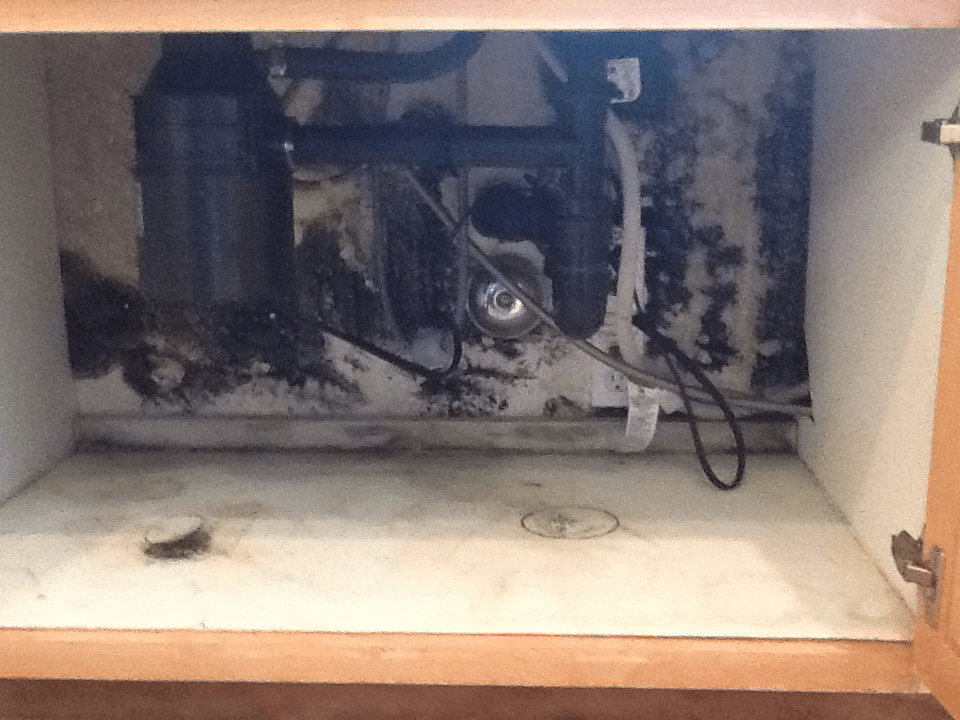 Mold on your kitchen sink faucet is not only unappealing but also a potential health and safety hazard. By keeping your faucet dry, regularly cleaning it, fixing any leaks, and improving ventilation in your kitchen, you can prevent mold growth and ensure a clean and healthy kitchen. Don't let mold take over your faucet - take action and keep it clean and dry to maintain a beautiful and functional kitchen.
Mold on your kitchen sink faucet is not only unappealing but also a potential health and safety hazard. By keeping your faucet dry, regularly cleaning it, fixing any leaks, and improving ventilation in your kitchen, you can prevent mold growth and ensure a clean and healthy kitchen. Don't let mold take over your faucet - take action and keep it clean and dry to maintain a beautiful and functional kitchen.





